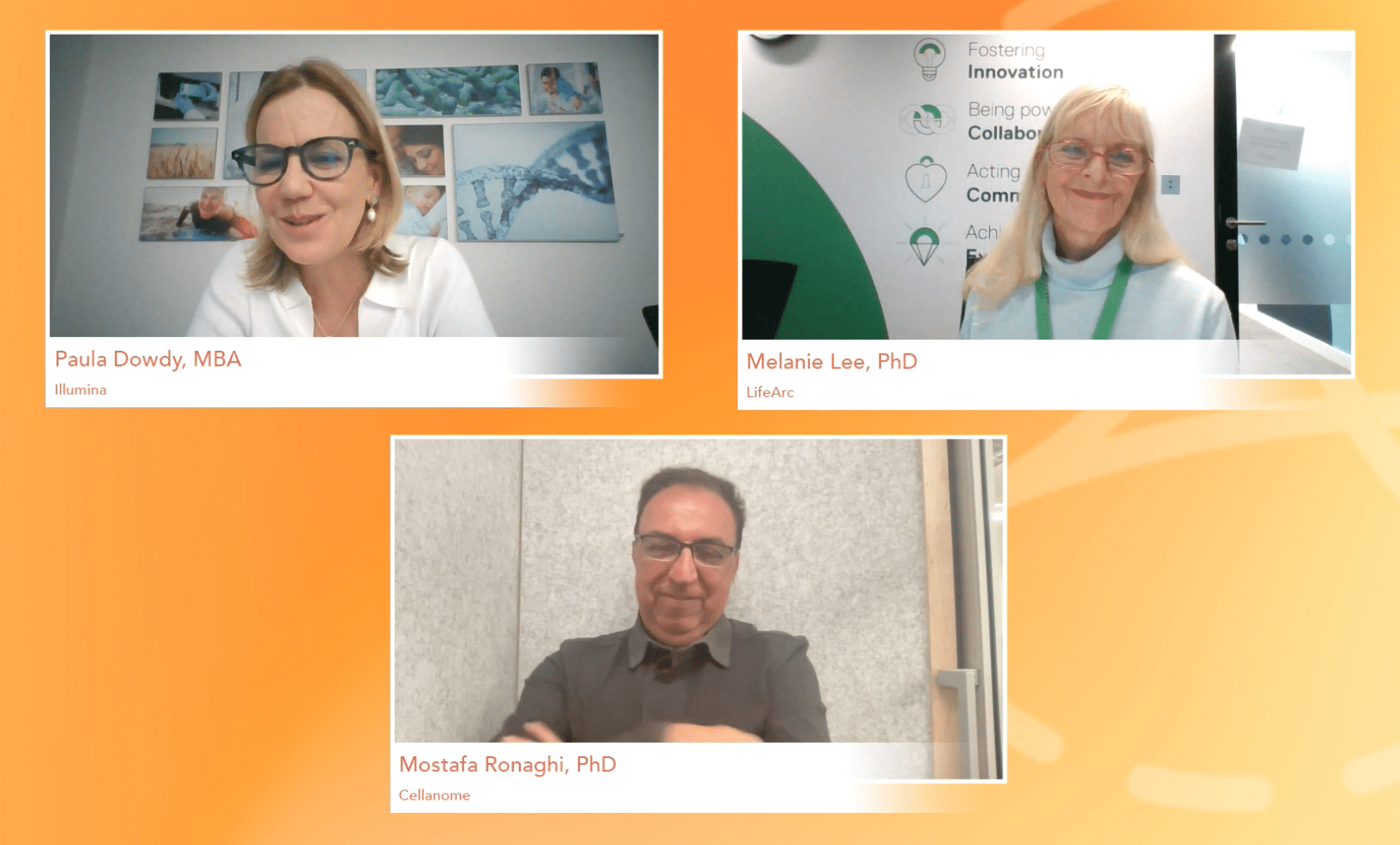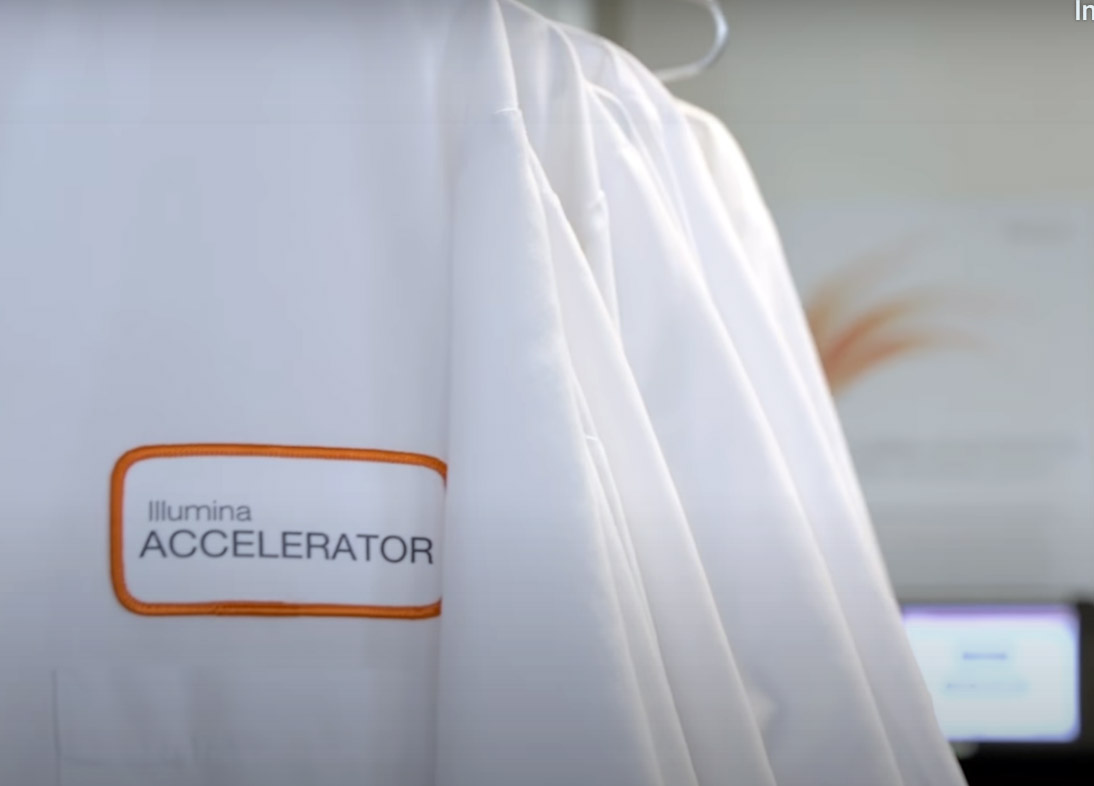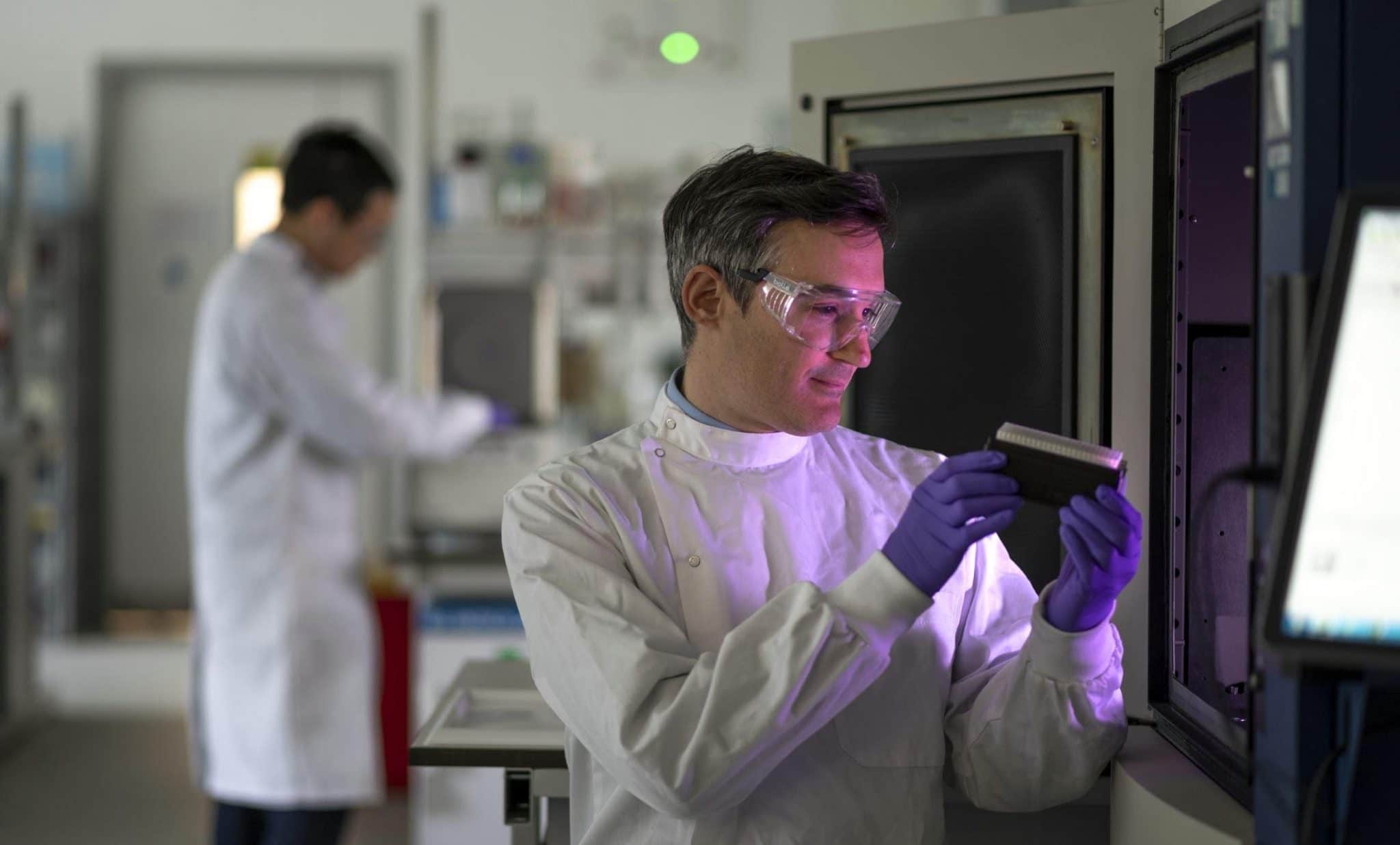By Dr Melanie Lee CBE, CEO
Last month I was pleased to take part online in a fireside chat at the Illumina for Startups Summit with Mostafa Ronaghi, Executive Chairman & Co-Founder, Cellanome and Paula Dowdy MBA, Board Director, Advisor and former SVP Illumina.

Entrepreneurs, founders, investors and industry leaders from around the world attended the event to share their latest perspectives and to connect.
LifeArc and Illumina’s paths first crossed in 2019, when Illumina decided it was time to look at expanding their genomics company creation engine outside the US and alighted on Cambridge as their first international location to build breakthrough genomic startups. LifeArc was interested in investing in the new initiative based on the great success that Illumina had achieved with the same model on the west coast of the US.
That was over four years ago, and since then truly revolutionary scientific ideas have underpinned the portfolio companies supported through the scheme.
Three key takeaway points for start ups
1. Make genomics understanding actionable
A key message for company startups: founders need to think really hard about the actionability of genomic information because, as Mostafa highlighted, the actionability of the genome is still below one per cent.
Being able to apply genomics to the early detection, treatment and even cure of a disease is on the horizon as the clinical diagnosis of conditions is fast-changing. For some conditions, the traditional diagnosis of disease after symptoms have appeared can be far too late and the slow wait is very distressing for a patient and their families awaiting a diagnosis and a treatment plan.
For a very cruel condition like motor neuron disease, early diagnosis is crucial to help with appropriate treatment and the timely management of symptom onset. That is why, as part of our Motor Neuron Disease Translational Challenge, we are working on better detection, via patient data to predict those at risk of developing MND, using devices to measure ‘pre-symptomatic’ disease and identifying novel biomarkers to accelerate diagnosis of MND.
Founders need to understand how clinicians, healthcare systems and individuals can use understanding about individual mutations to design, plan and monitor their own lives from disease prevention to dietary approaches.
2. Focus on unmet need, like rare diseases
It is incredible to see the power we have now with genetic repair to be able to ‘solve the problem’ and to potentially cure rare genetically-based diseases. In the past, founders may have been reluctant to consider the rare disease space because of the lack of a commercially viable business model. But I urge genomics founders to take risks and heart from an example like Orchard Therapeutics and the approval they have for Libmeldy in Europe and the UK for children with metachromatic leukodystrophy (MLD).
Libmeldy is an autologous stem cell gene therapy product to treat MLD, a rare, inherited, neurometabolic disease that causes rapid and progressive demyelination and neurodegeneration, leading to severe neurological disability and death.
3. Do the right thing when markets are tough
Times are tough economically, with the ongoing war and the banking sector in turmoil, it’s a tough time to be pitching for investments. However, the fundamentals of life sciences as a sector have not changed. As Mostafa advised, entrepreneurs and founders should remain focussed on doing the right things: be in the right markets, with the right team and get backing from the right investors.
My final word of advice for entrepreneurs of startups
When you are faced with reasons from others why your ideas and plans won’t work, outperform to overcome that objection, by working out what needs to be done to prevent the expressed reasons from being an obstacle.
Be resilient and overcome those objections posed by your advisors and investors. This way you will be advancing your product and company’s journey.
Media contact
Hannah Severyn
Head of Media and PR at LifeArc



